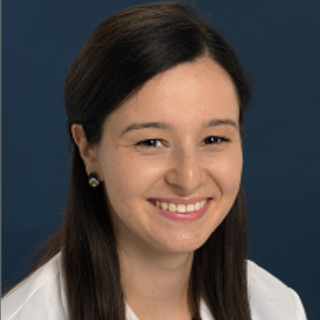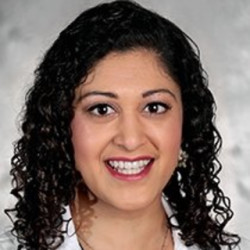In medical school, we are taught how to help bodies adapt and work through stressful situations. One of the most powerful lessons I learned in medical school was how to treat an acute ischemic stroke. When there is a blockage in a blood vessel in the brain, blood can no longer pass through and oxygenate the brain. If the blockage is not cleared in a timely fashion, we may lose all of these important things that make us, us. What lies after this blockage is what we call a “penumbra,” or an area of tissue that is salvageable during a stroke. Although this area of brain is missing its main blood supply, it has collateral arteries to keep it alive for somewhere between minutes to hours. It is the interface between dark and light, between life and death. Things could go poorly, but things also have the potential to turn out well.
So as a third-year medical student on my internal medicine rotation, it seemed almost paradoxical to learn that part of the management of an acute ischemic stroke is to transiently keep the blood pressure on the higher side — a therapeutic mechanism called “permissive hypertension.” Even though one of the major causes of strokes is high blood pressure, we allow the blood pressure to be high on purpose — no matter how many times the monitors beep — to push past the blockage, augment the blood flow, and keep the brain alive. We allow the body to be stressed, to exist not in homeostasis, as a way to improve the situation. The concept of permissive hypertension has woven itself throughout my medical training time and time again.
There have been many acutely stressful events in my medical career, but the ones that stick out the most are on Labor and Delivery. Each time a mother walks through the entrance, they expect to exit with a healthy baby. We try our hardest to deliver all babies vaginally, but there are many indications to perform a C-section. Interns typically only handle “primary” C-sections, or a patient’s first time having a C-section. A “repeat” will usually go to a second year, or a senior resident, with senior residents always handling STAT cases.
Four months into my intern year, I found myself running back to the OR in the middle of the night with a baby who had been down for nearly 10 minutes. I frantically called my chief resident, who was down in the ED seeing a patient with a miscarriage. No answer. I paged her as a priority. No answer. I called her cell phone again. No answer. I knew she was probably counseling a set of grieving parents. I finally got into the OR, and saw my attending physician helping move the patient onto the operating table, and the anesthesiologist standing over her head, verbally consenting her for general anesthesia, as she did not have an epidural to bolus. The nurses and scrub tech were bustling around me, placing a Foley catheter and opening the surgical trays. The patient was scared and crying hysterically. I have always worn my heart on my sleeve, and could acutely feel the range of emotions she was going through.
I tugged on my attending physician’s sleeve, panicking inside. “Dr. Burgey, I can’t get a hold of the chief!”
Dr. Burgey has been delivering babies since before I was born. She is weather-beaten in a good way. She is an exceptional teacher with an excellent sense of humor, a calm surgeon in the face of trouble. Dr. Burgey snickered, and said, “Well, you better go scrub then!”
I felt frozen. Was I capable of trying to balance all of the emotions with the serenity and composure needed to be a good surgeon? And what attending would be crazy enough to let an intern do a STAT section anyway!? I scrubbed in, and moments later was holding a scalpel over the patient’s belly. We needed to be quick. The anesthesiologist placed the endotracheal tube and said, “Go!” My instincts kicked in, and my hands acted of their own accord. Skin. Fat. Fascia. Our fingers bluntly dissected the rectus muscles off to the side and broke through the peritoneum. I grabbed the scalpel back and made an incision in the uterus. My hand slid in, grasped the fetal vertex, elevated it to the level of the hysterotomy. The baby delivered one minute after the initial skin incision. And of course, as often happens in these emergency situations, it was screaming and pink. I’d much rather that than the alternative. At this point, my chief burst through the OR doors, panting. She had sprinted all the way up from the ED. She motioned to go scrub in, but my attending, Dr. Burgey, snickered once again, saying, “That’s OK. Kathleen and I have got this.”
We finished the section, and everything went well. My heart had stopped racing, and I felt like I could think again. Stressful moments in surgical education help us grow. Stress is not always bad. In this scenario, I was thrown into a challenging situation, but rose to the occasion. However, it is important to recognize that one cannot operate — quite literally — in high stress conditions all the time, just as we do not allow our patients to have high blood pressure all the time. Constant stress in medical education is what leads to the equivalent of a stroke in real-life terms — burnout. Just as we bring our patients down to a normotensive blood pressure after they recover from their stroke, we must also take time to reflect and recharge in our careers.
One of the most stressful days of my intern year was one where I grew the most as a doctor. There is bad stress where we drown in EMR clicks and scutwork, and good stress where we grow as physicians. So now, when I am thrown into a challenging situation, and the little voice in my head starts to panic, I remind myself about the concept of permissive hypertension, and that these stressful moments will help me grow.
Do you think stress during surgical education is a useful learning tool? Share why or why not in the comments.
Kathleen Ackert is a resident physician in obstetrics & gynecology at St. Luke’s University Health Network. She is a graduate of the Philadelphia College of Osteopathic Medicine and Siena College. When she is not in the hospital, she can be found in coffee shops writing narrative medicine pieces or eating in restaurants that offer low-lit dining experiences. She enjoys exploring the latest fitness craze, watering her house plants, and instagramming pictures of fancy lattes at @caffeinewithkathleen. She is a 2021—2022 Doximity Op-Med Fellow.
Dr. Ackert dedicates this Op-Med to the "incredible" Dr. Gail Burgey, who retired June 2022. Dr. Ackert writes, "She is the heart & soul of our Labor and Delivery. She taught me to balance closeness and detachment. She inspires me to take care of all of my future patients with compassion, respect, and grace."
All names and identifying information have been modified to protect patient privacy.
Image by Denis Novikov / Getty







